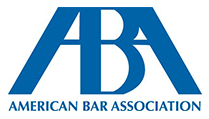Stern Law Litigating Bard Ventralex™ ST Cases
The skilled defective medical device lawyers at Stern Law, PLLC, are currently litigating cases involving hernia repair with Bard Ventralex™ ST mesh. If you had surgery to repair a hernia and developed a subsequent complication or injury, contact Stern Law today to find out if you could be eligible to file a lawsuit for damages against the manufacturer.
Hernia Causes and Treatment
A hernia is the bulging of internal organs through the wall of muscle or tissue that ordinarily contains them. Hernias are often caused by incidents of lifting heavy objects, chronic coughing, enduring pregnancy and childbirth, being overweight, or straining because of constipation. Certain activities or conditions — preexisting muscle conditions, aging, continual strain on the abdomen or groin — can increase a person’s likelihood of developing a hernia, and gender can also be a factor in certain hernia development. For instance, men are far more likely than women to develop hernias in the groin area.
Hernias are most common in the abdomen and groin but can also develop in other areas of the body. They often cause pain and discomfort, in addition to creating a visible bulge on the patient’s body. Types of hernias generally include:
- Umbilical – Hernia near the belly button
- Ventral – Hernia in the abdominal wall
- Inguinal – Hernia in the groin area
- Femoral – Hernia in the inner thigh area
- Hiatal – Hernia in the chest and diaphragm area
- Epigastric – Hernia between the chest and belly button
- Incisional – Hernia at the site of a previous surgical incision
The standard treatment for a hernia is surgical repair to push the herniated tissue back in place and create a stronger muscle wall to prevent the hernia from coming back. Surgeons will often use mesh implants to try to accomplish this, one of which is the Ventralex™ ST patch.
What is the Ventralex™ ST?
Hernias occur when a wall of tissue or muscle becomes weak and allows internal organs to protrude through. Hernias often cause pain and discomfort, in addition to creating a visible bulge on the patient’s body. The Ventralex™ ST patch is one product doctors have been using for surgical repair of hernias. Ventralex™ ST is manufactured by Davol Inc., a subsidiary of C.R. Bard, Inc., and is round patch of polypropylene monofilament fibers that have been woven into mesh. Medical doctors use the Ventralex™ ST patches for intraabdominal repair of umbilical, epigastric, and other small ventral hernias.
The Ventralex™ ST is one in a line of Davol’s mesh products containing its registered Sepra® technology. Sepra® technology is described as a “hydrogel barrier” on one side of the mesh patch that purportedly minimizes tissue attachment to the mesh and provides internal protection during the healing process. The hydrogel barrier initially swells upon implantation and is resorbed within about 30 days following the patient’s surgery.
Ventralex™ ST Mesh Injuries
In Stern Law’s established product liability practice, we have heard of numerous injuries associated with implantation of the Ventralex™ ST patch. Most often, our clients report the following injuries:
- Infection – Postoperative infection is a very common problem following implantation of a Ventralex™ ST patch. Up to 8 percent of patients develop infections after mesh procedures. Sometimes the infections can be controlled with antibiotics, but they can become severe enough to require surgical intervention.
- Chronic pain – Ongoing pain is another frequent complication reported by our clients after implantation of a Ventralex™ ST patch. This pain can be localized to the site of implantation or can radiate out to the limbs and greatly affect quality of life.
- Adhesions – Adhesions, which are intense formations of scar tissue that stick to internal organs, are another potential complication from the Ventralex™ ST. Adhesions can cause pain and can make any additional surgeries more complicated.
- Mesh breakage – The Ventralex™ ST patch had a tendency to break, especially at its edges, which can lead to hernia recurrence, pain, and other serious complications.
- Mesh shrinkage – The polypropylene material used to make Ventralex™ ST patches has been known to contract or shrink into itself in the weeks following surgery. Shrinkage can cause the mesh to become detached from the tissue holding it in place, potentially leading to hernia recurrence, migration, or other complications.
- Mesh erosion – Ventralex™ ST patches can erode into surrounding tissue and organs, causing serious issues like pain, illness, and infection. Erosion typically must be resolved through additional surgery.
- Mesh migration – The Ventralex™ ST patch also has a tendency to move or “migrate” to another area of the body, leaving the patient vulnerable to other complications. Migration can lead to hernia recurrence, erosion, and perforation, necessitating another operation.
- Intestinal fistula – Hernia mesh like Ventralex™ ST can cause intestinal fistulas (an abnormal hole or opening in the gastrointestinal tract) through intense inflammation and pressure on the intestines. These fistulas can also be caused by mesh erosion through or perforation of the intestines. These fistulas cause pain, diarrhea, nausea, dehydration, and malnutrition. They must be addressed through additional surgery.
- Spermatic cord injuries – Men undergoing repair of inguinal hernias with Ventralex™ ST can develop injuries to their spermatic cord due to the mesh adhering to, perforating, or entrapping the spermatic cord. This leads to pain, interference in sexual function, and in severe cases, a complete absence of sperm in their ejaculate fluid. The loss of sperm leaves these men unable to have children. If the injury to the spermatic cord is extreme and cannot be repaired safely, the affected man could require surgery to remove one or both of his testicles.
- Testicular ischemia – When men have a Ventralex™ ST implanted in the groin area, they can develop blood loss to the testicles (ischemia). This blood loss is due to mesh constriction and mesh cutting off regular blood flow to all areas of the body. Some men have testicular shrinkage associated with this complication, and some men end up requiring removal of the testicles.
- Bowel Obstruction – After surgery to repair a hernia using a Ventralex™ ST , inflammation and scar tissue can form and close off the small or large intestine. The mesh can also adhere to the intestines, causing intestinal bowel incarceration. When a patient has a bowel obstruction, normal digestive function is impeded because stool cannot travel all the way through the intestines. This leads to a number of serious and painful medical issues. Bowel obstructions must be repaired with additional surgery.
Compounding all of these injuries is the rigor involved in removing a Ventralex™ ST mesh implant.
Removal of Ventralex™ ST Patches
Several injuries that can develop from implantation of a Ventralex™ ST patch require surgery to remove the original mesh and readdress the existing hernia. Unfortunately, due to the design of the mesh material, removal is extremely difficult and sometimes impossible.
The porous nature of the patch – resembling a window screen or net – encourages rapid tissue embedment, which makes dissection and removal tedious and complicated. Though Davol claims its Sepra® technology prevents tissue from becoming too attached, in reality, the tissue ingrowth process is still a major issue when a patient needs to have the patch removed. The process starts immediately and can be complete in one month, making it difficult for doctors to timely intervene and safely separate the mesh from the patient’s tissue. In some cases, the mesh can never be fully removed.
Ventralex™ ST Recall
In 2011, Davol issued a voluntary recall of the product because of mislabeling. The Ventralex™ patches come in several sizes, and Davol found out that a batch of its medium-sized patches had been packaged in pre-printed cartons for its small-sized patches. Davol corrected the problem and placed the product back into the market. Though this recall did not involve safety of the product itself, Stern Law joins law firms across the country in alleging this mesh product is not safe for implantation.
Ventralex™ ST Studies and Reports to FDA
In 2014, a group of researchers published their findings from a study formed with the goal of determining the long-term recurrence and complication rates after small abdominal wall repair with two different bilayer prostheses (Intraperitoneal Tension-free Repair of a Small Midline Ventral Abdominal Wall Hernia: A Randomized Study with a Mean Follow-up of Three Years). The study was a randomized, single institution trial, including 83 patient with umbilical, epigastric, or incisional anterior abdominal wall defects 2 to 5 centimeters in size. One group of patients was treated with the Ventralex™ ST patch, and the other was treated with a different product not manufactured by Davol or Bard.
According to surgeon reports, the Ventralex™ ST was not as easy to implant and could not be implanted as quickly as the other product. Three months after surgery, the patients implanted with Ventralex™ ST had significantly higher levels of pain and discomfort than those who received the other product and reported a much lower rate of satisfaction.
At the end of the study, the Ventralex™ ST patients had a total of 11.7 percent recurrence, one infection, one small bowel obstruction, 15.7 percent reporting severe pain resulting from mesh shrinkage with a sense of the presence of a foreign body, and 15.6 percent instances of necessary surgeries to remove the implants. There were no recurrences of late complications in the group that received the other product.
These researchers concluded their study by stating, “The Ventralex™ Hernia Patch is associated with inconsistent deployment, spreading, or shrinkage, which account for late complications and decreases the overlap, which contributes to recurrence rate.”
This is extremely alarming information. But does the FDA know about it? Yes, it does.
Manufacturers, doctors, and patients can submit reports of adverse events associated with drugs and medical devices to the Food and Drug Administration (FDA) to alert it to potential dangerous issues. The FDA has received numerous such reports regarding the Ventralex™ ST patch. Some of these reports include the following descriptions:
- In August 2017, a patient’s attorney reported a patient underwent surgery to repair an umbilical hernia using a Ventralex™ ST. Following the surgery, the patient developed complications including hernia recurrence and had to have another surgery to remove the implant. The patient experiences ongoing pain and has been permanently injured.
- Also in August 2017, a patient’s attorney reported a patient receiving a Ventralex™ mesh patch for repair of an umbilical hernia. Shortly after surgery, the hernia recurred, and the patient had to undergo an additional procedure to remove the Ventralex™ mesh and readdress the hernia. During the surgery, the patient’s surgeon discovered the Ventralex™ patch had “curled up.” The patient still experiences severe pain.
- In July 2017, a patient’s attorney reported a patient undergoing surgery involving implantation of a Ventralex™ hernia patch for repair of an incisional ventral hernia. After surgery, the patient experienced pain, nausea, and vomiting and was admitted to the hospital the nest day. The pain continued during the next several months. The patient was ultimately diagnosed with infected hernia mesh, and her doctor determined the mesh needed to be removed. The patient underwent another surgery to remove the infected Ventralex™ mesh, which involved a transverse colon resection and small bowel resection because the Ventralex™ mesh was densely adhered to her colon and small intestine. The patient later died, and it was determined her death was caused or contributed to by the Ventralex™ hernia mesh patch. The patient’s injuries included enterocutaneous fistula, infection, colon and bowel injuries, abdominal fistula, cachexia, chronic peritonitis, abdominal abscess, and death.
- Also in July 2017, a hospital reported that a surgeon was attempting to implant a Ventralex™ ST in a patient for repair of a hernia. Prior to implantation, the Ventralex™ ST patch “fell apart.” The surgeon discarded the mesh and proceeded with a different implant.
- Also in July 2017, a patient reported having a Ventralex™ ST patch implanted for repair of a hernia. Since the surgery, the patient has experienced abdominal pain, constipation, vomiting, and blood in his stool. At the time of the report, the patient’s doctors were still trying to determine the cause, and the mesh had not been ruled out.
- In June 2017, a patient reported undergoing surgery to repair an abdominal hernia using a Ventralex™ ST patch. After the surgery, she began experiencing extreme trouble getting his abdominal incision to heal. He was in chronic abdominal pain and developed bowel obstructions, for which he had to have an additional surgery to remove the Ventralex™ ST patch and readdress the hernia. During the surgery, the patient’s surgeon found numerous adhesions. The patient continues to experience abdominal pain and discomfort.
- In May 2017, a patient reported having a Ventralex™ ST patch implanted for hernia repair. Following the surgery, the patient experienced hernia recurrence, along with a “burning, stringing” feeling at the navel, as if someone was “poking [her] with a needle.” The patient also began to experience abdominal bloating, nausea, and diarrhea. The patient reported being told she has a bowel obstruction. She cannot sleep in certain positions anymore, cannot lift anything, and had to quit work because of the pain and difficulty lifting objects. The patient continues to experience these complications and is seeking medical treatment to try to remove the implant.
- Also in May 2017, a patient reported repair of an incisional hernia using a Ventralex™ patch. After the surgery, the Ventralex™ mesh folded inside the patient’s body, causing her pain, hernia recurrence, adhesions, and scarring. The patient had to undergo an additional procedure to remove the Ventralex™ mesh and readdress the hernia. The patient reported being permanently injured.
- In April 2017, a patient reported being treated with an incarcerated umbilical hernia with a Ventralex™ hernia mesh patch. After surgery, the patient was hospitalized and diagnosed with an abdominal wall phlegmon [a spreading, diffuse inflammatory process with formation of purulent exudate or pus, usually related to a bacterial infection]. The patient underwent an additional surgery to remove infected tissue. The surgeon discovered the Ventralex™ mesh had a hole in it, and the patient had developed an intestinal fistula. The surgeon had to remove 15 centimeters of small intestine.
- Also in April 2017, a patient’s attorney reported a patient experiencing severe injuries after implantation of Ventralex™ mesh for repair of a hernia. The patient developed nausea, vomiting, and weight loss, after which the patient’s doctor discovered he had a small bowel obstruction from the Ventralex™ patch. The patient underwent surgery to remove the implant, during which the surgeon noted that the Ventralex™ mesh was incorporated into at least the serosal layer of the small intestine, causing mass effect and obstruction. The implant was removed, as well as 3 feet of the patient’s small intestine.
These are merely a few of the reports received as to the Ventralex™ ST patch in 2017. While the FDA is well aware of the potential for serious health risks, it has taken little to no action regarding Ventralex™ ST mesh. Aside from disseminating Davol’s own information about its mislabeling, the FDA has not taken action specific to this implant. No recall has been issued based on the safety of the product.
In April 2017, the FDA issued a general statement widely addressing hernia mesh. It reported on the most common adverse events following hernia repair with mesh. The FDA stated pain, infection, hernia recurrence, adhesion, and bowel obstruction were the most common complications associated with hernia mesh. But it also minimized these injuries by noting that the same complications occur with all mesh surgeries, with or without use of mesh.
In the same statement, the FDA went on to say it had received many reports of complications related to hernia mesh, but that the Administrations had concluded recalled mesh products were the main cause of several of these complications. Our attorneys find this bewildering because our clients continue to report debilitating injuries from mesh products readily on the market, like the Ventralex™ ST patch. Where you cannot rely on the FDA to take strong action, we will. Stern Law can help you hold Davol and Bard accountable for your injuries.
Ventralex™ / Hernia Mesh Alternatives
Unfortunately, the only way to treat a hernia is to repair it through surgery. Some factors like weight and digestive health can contribute to hernias, but changing those behaviors will not treat a hernia. And while the herniated tissue can often be manipulated and pushed back in, it will always come back out without surgical repair. Untreated hernias can become more painful and lead to additional medical complications.
Mesh has become an incredibly popular technique for repairing hernias, but it is not the only way, and our lawyers argue it is not the safest way. To understand the alternatives, it helps to learn about the two different ways hernia surgeries can be performed:
- Open surgery – Open surgery involves a long incision around the hernia site. The surgeon will open up the skin and fat and create a hole in the muscle down to the hernia, then push the herniated tissue back in place and reinforce the muscle/tissue wall. All types of hernias – big and small – regardless of location can be repaired using this method.
- Laparoscopic surgery – Laparoscopic surgery is often regarded as a less invasive option that involves a smaller incision. The surgeon will place a balloon or gas into the body through the small incision, which will expand to create room for the surgeon to work. The surgeon will then repair the hernia using a camera and surgical tools to pull the hernia back and reinforce the muscle/tissue. Smaller hernias are usually best suited for repair using this technique.
Aside from mesh, surgeons have the option to repair hernias using sutures, and the patient’s own fascia (fibrous tissue), tendons and ligaments. They can essentially sew the muscle back together or use the patient’s own tissue, tendons, and ligaments to create a stronger wall above the herniated tissue.
Using the patient’s own natural tissue prevents many of the foreign body reactions patients struggle with and avoids other mesh complications altogether. Additionally, if the hernia reoccurs, or another complication occurs, the surgeon can resolve those issues without having to worry about whether he will be able to remove mesh that might have become completely encapsulated with scar tissue. If scar tissue formation is advanced, the mesh might never be able to be fully removed, which limits a surgeon’s repair options and inhibits a patient’s potential for total recovery.
In pursuing Ventralex™ ST cases, we argue safer alternatives existed, and Davol and Bard ignored them and failed to adequately warn patients and their doctors about the unreasonable danger associated with this mesh product.
How Do I Know What Mesh My Surgeon Used?
In order to file a lawsuit against a mesh manufacturer, a person must be able to prove he or she had one of that manufacturer’s products. Many times, patients who undergo hernia repair surgery do not know the exact name of the product used, and in some cases, are not truly sure whether the surgeon used mesh at all. Surgeons typically spend time with the patient explaining the procedure to be performed and the projected results, rather than discussing product brand names or manufacturers. For this reason, few of our clients know what product they have when they first contact us.
When you sign up with Stern Law, we do that work for you by immediately ordering your medical records from your original hernia repair surgery. Included in our records order, we request copies of the intraoperative notes and implant reports from the day of your surgery. Those records will usually contain a product sticker or lot number that identifies the specific brand and manufacturer of your mesh implant. We call this sticker or lot number “product identification.”
Once we have identified what brand of hernia mesh you had implanted, we can get to work building a solid case against that particular manufacturer. If we end up discovering that you did not have a Ventralex™ ST patch, we will do our best to include your case in one of our other hernia mesh litigations.
Where Do I Start if I Want to Pursue a Claim?
When you have been injured by a product like hernia mesh, it can be difficult to know what you should do first. At Stern Law, we keep the process simple, so you can worry less. During your initial call to our firm, you will be able to schedule a free consultation with a seasoned product liability lawyer, who will explain the litigation process and the services we provide.
When you hire our firm, your attorney will prepare your case by:
- Obtaining a detailed account of your surgeries and injuries;
- Ordering medical records for your original hernia operation, as well as any further treatment or surgery;
- Determining product identification, or the name of your exact mesh implant, as well as the name of the manufacturer;
- Consulting with medical experts and industry experts to obtain support for your claim;
- Determining where your case should be filed and against whom;
- Drafting and preparing a petition for filing.
We have extensive experience in litigating medical device claims like Ventralex™ ST, so you can feel confident that we know what it takes to win these cases. We are ready to go to work for you today.
Stern Law Offering Free Hernia Mesh Claim Review
At Stern Law, the last thing we want to deter you from pursuing legal justice is the fear you cannot afford it. We know our clients have already endured costly treatment and revision surgeries because of their hernia mesh injuries, and they are struggling under the weight of costly medical bills. That’s one of the reasons we offer free case consultations. Your initial call or meeting with our firm is completely free, and we will investigate your claim without ever asking for money up front. If our investigation concludes we cannot pursue a claim for you, you never have to worry about receiving a bill from us.
Additionally, if we conclude we can pursue a claim on your behalf, we will generally advance the costs of doing so. Most people cannot afford the expenses associated with litigating a product lawsuit, so we assume that financial risk for you and contract our cases on a contingency fee basis. That means we only get paid if you get paid. If you do not receive a money award from your lawsuit, you will not owe us anything.
Especially in the circumstances of hernia mesh, when you are potentially filing a claim against a major medical corporation like C.R. Bard, the process can seem intimidating. But when you hire Stern Law, you can rest easy knowing we have the resources and experience to bring you best possible results.
Contact Stern Law, PLLC
At Stern Law, PLLC, we understand the turmoil these injuries cause in your life and the lives of your family members, and we are dedicated to advocating aggressively on your behalf. If you or a loved one underwent hernia repair surgery using a Davol Ventralex™ ST mesh patch and suffered a postoperative complication, contact Stern Law, PLLC, today at (844) 808-7529, and schedule your free consultation with one of our seasoned product liability attorneys.













